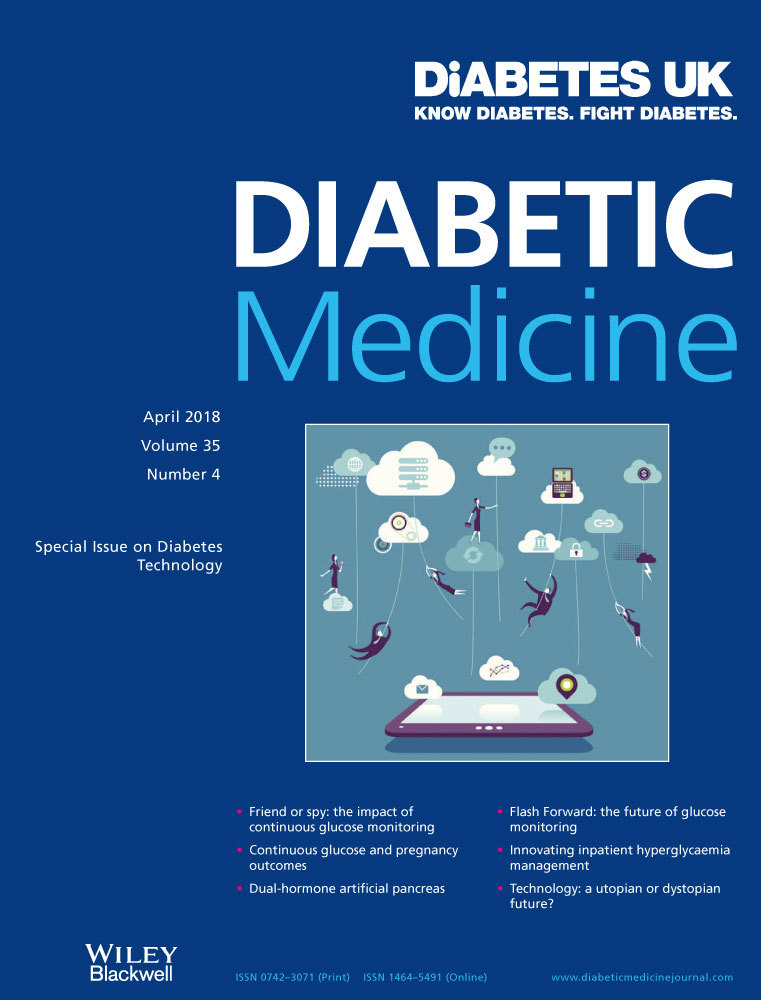Continuous glucose monitoring in pregnant women with Type 1 diabetes: benefits for mothers, using pumps or pens, and their babies
Abstract
Aims
To review the current literature on the use of continuous glucose monitoring during pregnancy in women with Type 1 diabetes.
Methods
We searched the literature for randomized controlled trials using continuous glucose monitoring during pregnancy in women with Type 1 diabetes.
Results
Three randomized trials were found and discussed in this review. One UK study found a reduction in large-for-gestational-age infants; however, only masked continuous glucose monitoring was used in that study. A Danish study used intermittent real-time continuous glucose monitoring and found no differences. The present authors conducted the CONCEPTT trial, in which pregnant women and women planning pregnancy were randomized to receive continuous glucose monitoring or standard care. We found a greater drop in HbA1c, more time spent in the target range, and a reduction in some adverse neonatal outcomes in women using continuous glucose monitoring. Numbers-needed-to-treat to prevent a large-for-gestational-age infant, a neonatal intensive care unit admission for >24 h, and a neonatal hypoglycaemia event were low. These findings were seen in both injection and pump users and across all countries. Possible reasons for differences in study findings are discussed. In addition, several issues need further study. Glycaemic variability and differences in dietary intake may also have played a role. Despite excellent glycaemic control, babies continue to be large. More research is needed to understand the role of glucose targets and the dynamic placental processes involved in fetal growth.
Conclusions
The use of continuous glucose monitoring in women with Type 1 diabetes in pregnancy is associated with improved glycaemic control and neonatal outcomes. Further research examining the glycaemic and non-glycaemic variables involved in fetal growth and the cost–benefit of using continuous glucose monitoring in pregnancy is warranted.




